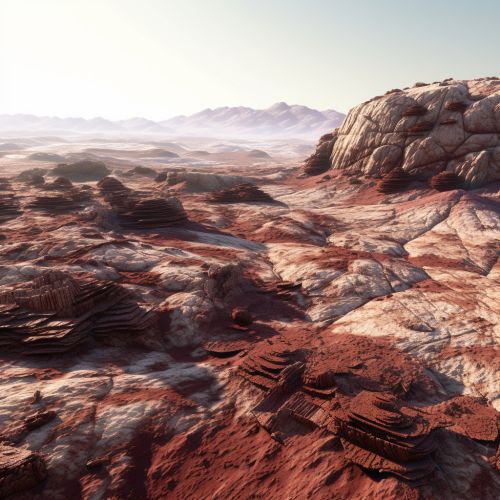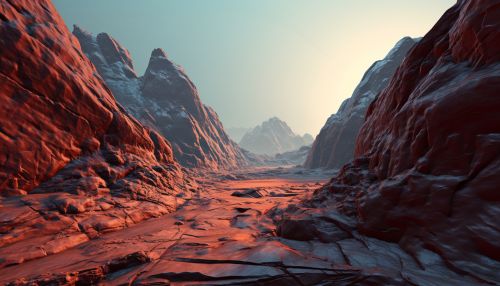Chemical Kinetics of Atmosphere-Surface Interactions on Mars
Introduction
Chemical kinetics is the study of rates at which chemical reactions occur, which is particularly important in understanding the Mars' atmospheric and surface interactions. This article delves into the intricate details of the chemical kinetics of atmosphere-surface interactions on Mars, discussing the various processes involved, the factors influencing these interactions, and the implications of these interactions for Mars' atmospheric composition and climate.


Atmospheric Composition of Mars
The Martian atmosphere is composed primarily of carbon dioxide (95.32%), with minor constituents of nitrogen (2.7%), argon (1.6%), oxygen (0.13%), carbon monoxide (0.07%), and traces of water and methane. The understanding of the chemical kinetics of these constituents is crucial in predicting the behavior of Mars' atmosphere and its interaction with the surface.
Surface Composition of Mars
The surface of Mars is primarily composed of basalt, a type of volcanic rock, and is covered in a thick layer of iron oxide (rust) dust that gives the planet its characteristic red color. The surface also contains significant amounts of silicon, oxygen, and minor amounts of other elements such as iron, magnesium, aluminum, calcium, and potassium.
Atmosphere-Surface Interactions
Atmosphere-surface interactions on Mars can be categorized into physical and chemical processes. Physical processes include the deposition and erosion of materials between the atmosphere and the surface, while chemical processes involve the exchange of chemical species and the alteration of the chemical composition of the surface and the atmosphere.
Physical Processes
Physical processes are primarily governed by the Martian weather and climate. The thin atmosphere of Mars allows for a significant amount of solar radiation to reach the surface, leading to temperature variations that can cause physical changes in the surface materials. This can result in the sublimation of ice into the atmosphere, or the deposition of atmospheric dust onto the surface.
Chemical Processes
Chemical processes involve the reactions between the atmospheric gases and the surface materials. For instance, the reaction of carbon dioxide with surface rocks can lead to the formation of carbonates. Similarly, the interaction of water vapor with the surface can result in the formation of hydrated minerals.
Factors Influencing Atmosphere-Surface Interactions
Several factors influence the rate and extent of atmosphere-surface interactions on Mars. These include the atmospheric pressure, temperature, solar radiation, and the chemical composition of the atmosphere and the surface.
Atmospheric Pressure
The atmospheric pressure on Mars is significantly lower than that on Earth, which affects the rate of chemical reactions and the exchange of materials between the atmosphere and the surface.
Temperature
The temperature on Mars varies significantly, from about -143 degrees Celsius at the poles during winter to 35 degrees Celsius at the equator during summer. These temperature variations can influence the rate of chemical reactions and the physical state of surface materials.
Solar Radiation
Mars' thin atmosphere allows a significant amount of solar radiation to reach the surface. This radiation can drive photochemical reactions and cause physical changes in the surface materials.
Chemical Composition
The chemical composition of the atmosphere and the surface also plays a crucial role in determining the nature and extent of atmosphere-surface interactions. For instance, the high carbon dioxide content of the atmosphere can lead to the formation of carbonates on the surface.
Implications for Mars' Atmospheric Composition and Climate
The atmosphere-surface interactions on Mars have significant implications for the planet's atmospheric composition and climate. For instance, the formation of carbonates on the surface can lead to a decrease in the atmospheric carbon dioxide content, which can affect the planet's climate. Similarly, the sublimation of ice into the atmosphere can increase the atmospheric water vapor content, which can influence the planet's weather patterns.
